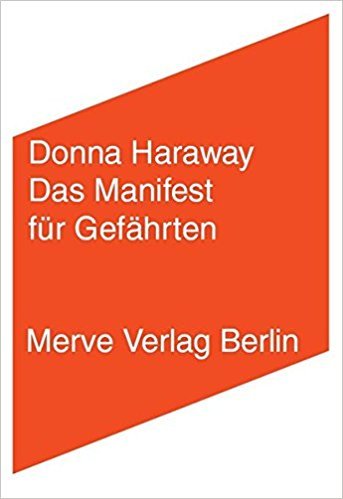What do you think?
Rate this book


144 pages, Paperback
First published April 1, 2003
"I yearn for much more reflection in dogland about what it means to inherit the multi-species, relentlessly complex legacy that crosses evolutionary, personal, and historical time scales of companion species." (94)This is the basic idea of Donna Haraway's Companion Species Manifesto, tortured across 98 pages. Okay, maybe I'm being a little harsh there, but much of this manifesto—especially the first twenty pages—is obnoxious and positively off-putting in the way that it's written. It's also wildly uneven. There are no sustained arguments, which I suppose is fine for a short manifesto that aims to be suggestive and provocative rather than convincing. But the bits of theory that you do get, especially near the beginning, are not only vague, but they're also presented lopsidedly against long descriptions of dog histories later on that are barely connected to the inchoate arguments earlier in the manifesto. One is left with the impression that it would have been better to read 1) one of the more extensive books about the history of dogs that Haraway alludes to, and/or 2) a more substantial book about the philosophy and ethics of non-human animals and their relation to human beings, the significance of shared environments, etc. Interest in the latter is why I picked up this book in the first place. I wanted to read it alongside Martha Nussbaum's work on animal flourishing and capabilities, Christine Korsgaard's Kantian approach to animal ethics, and so on. I, especially, could have done without the adolescent "Notes of a Sports Writer's Daughter."